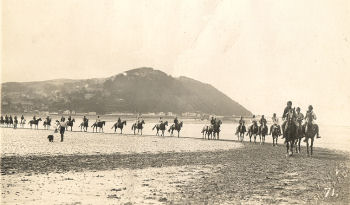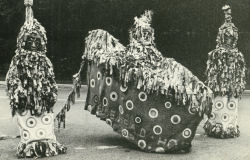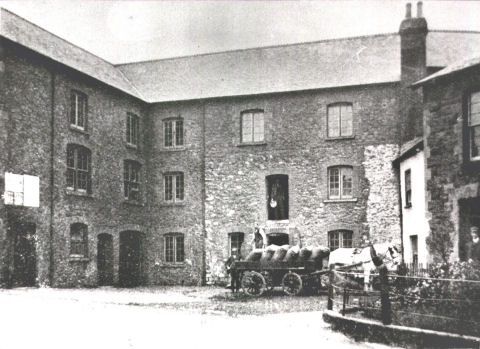slopes known as East Myne and West Myne.
In the 16th century the sea came up to conygar hill, near Dunster which had a harbour, and Minehead bay was a forest. Minehead consisted of
three parts: Higher town, Lower town and Quay (Key) town.
The Danes invaded in the 9th century and were chased off by the hobbyhorse; which now makes its appearance at the beginning
of May each year.
Hobby horse & Gullivers
'photo by permission of Bob Bonar'
In 1087 the Manor of Minehead was held by the Saxon Chief Aelgar, Earl of Mercia, son of Lady Godiva. The population was 69!
In 1265 William de Berkeley and a Welsh horde invaded and were driven back into the sea.
Minehead was bought by Lady Elizabeth Luttrell in the 1400's for 10000 marks and in 1421 she contributed ten shillings to provide a wooden
jetty for the town.
In a survey c.1740 are the names of the streets at that time (with original spelling):
Minehead Key, Puddle Street, Friday Street, Bampton Street,
Butts Lane, Ffrog Street, Middle Street, New Street, leading home from the Church, Ffishers Lane, Heron Lane, Lane between the Church and St.Michael's Well, Higher towne, Street from Vicarage House to Moore.
Some of the Inns mentioned were: The Key, The Lambe, The Kings Armes ''which is a good house and stables built on the wharfe gainst the sea''
The Newe Inn and The Crooked Fish.
Near Holloway Foot, Gregory Togg holds a dwelling house and also a fishing weare upon the seashore called Labbies weare, On the east side
of Ffrog street is the 'Angel Inn'.
Three Inns were situated in the Market Place: 'The Royal Oake', 'The Rose and Crown', and 'The George'. There was a further Inn in Bampton
street named 'The White Horse Inn'.
Between the Market Place to Puddle Bridge, this was outside the Old Priory, and Higher Quay Stile, were the Blue Anchor Inn
and The Swan.
Lower towne is not the central part of Minehead, it once consisted mainly of low, old-fashioned houses, covered with myrtle and roses
right up to the eaves. A lane, which was scarcely more than a waterway, led up from the sea. This lane, which was called in medievil times
'La Lane' remained in
much the same condition until the end of the 19th century. A raised causeway gave a place for walkers and on the south
side was a fine
row of Elm trees
for some distance.
On the right hand side of this lane there was a tannery (it was burnt down in the first great fire).
It used to be where the main carpark is today - the cinema (now another supermarket) was opened between the tannery and the main street
in 1934 click here to see actual video of the opening of the cinema.
Crossing the stream at the bottom of the parade and turning along a narrow short street
which is the 'new road
to the Quay' we come to Blenheim
Terrace. The whole road is now Blenheim Road. If you turn up Northfield road
(once named 'Field Lane')
you will see
a lane on your right.
This is the other part of the 'new road to the Quay'.
The Parade, then called Puddle Street, had a block of houses in the middle of it. The Town Hall was an isolated building, and Market Place Lane ran around it, by the Almshouses and the ancient market cross to Frog Street.
The space now called Wellington Square was also obstructed by houses. Here stood the 'Island House'. on the right was Frog Street, now
called Holloway Steet.
The HSBC bank was a music warehouse around1880 owned by a Mrs.Bridgers. It then became a post office run by Mrs. Catherine
Kinnersley - her husband was a local photographer.
Henry Woods second hand shop was once the Cozy Cinema. It is now flats.
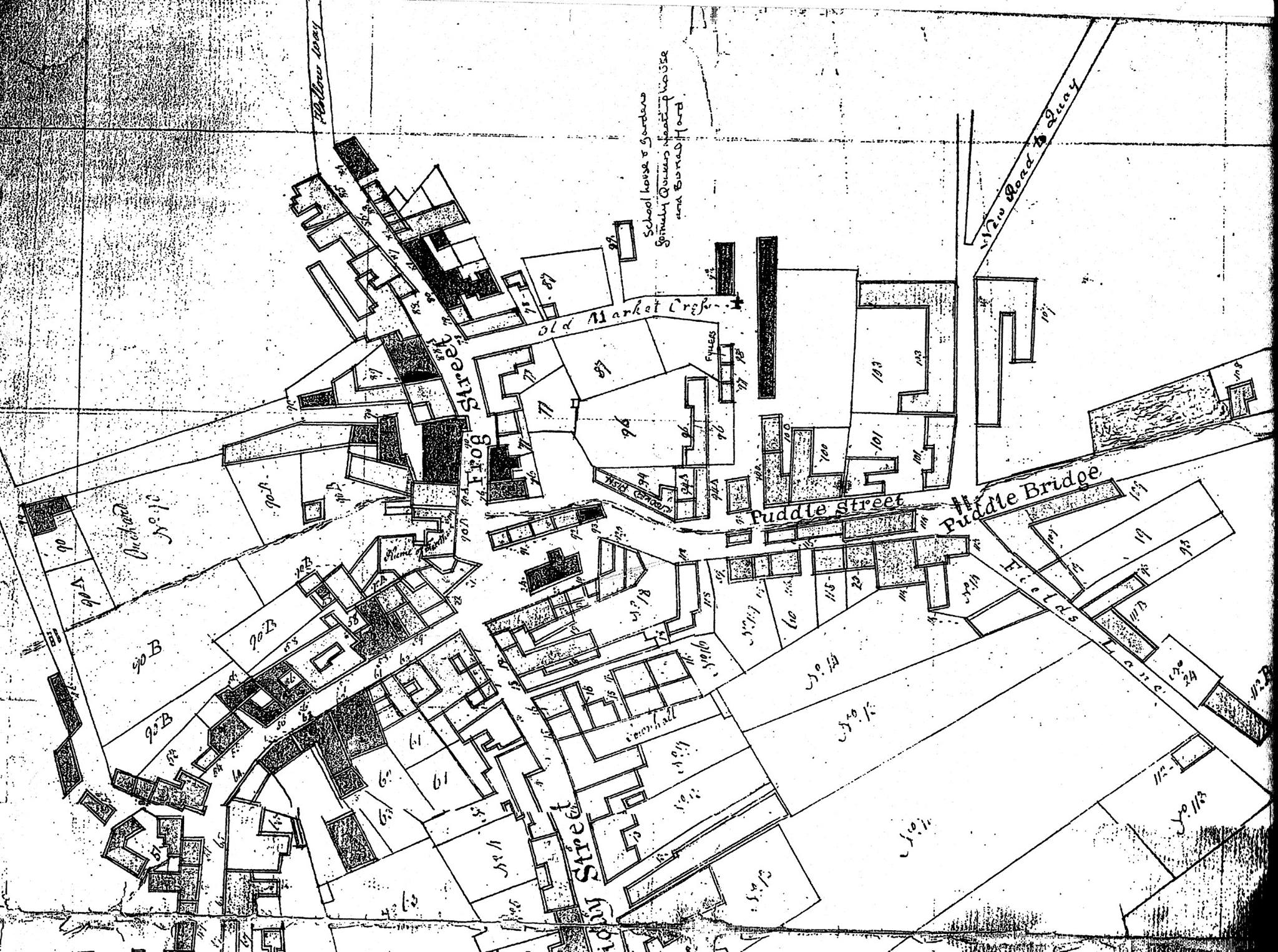
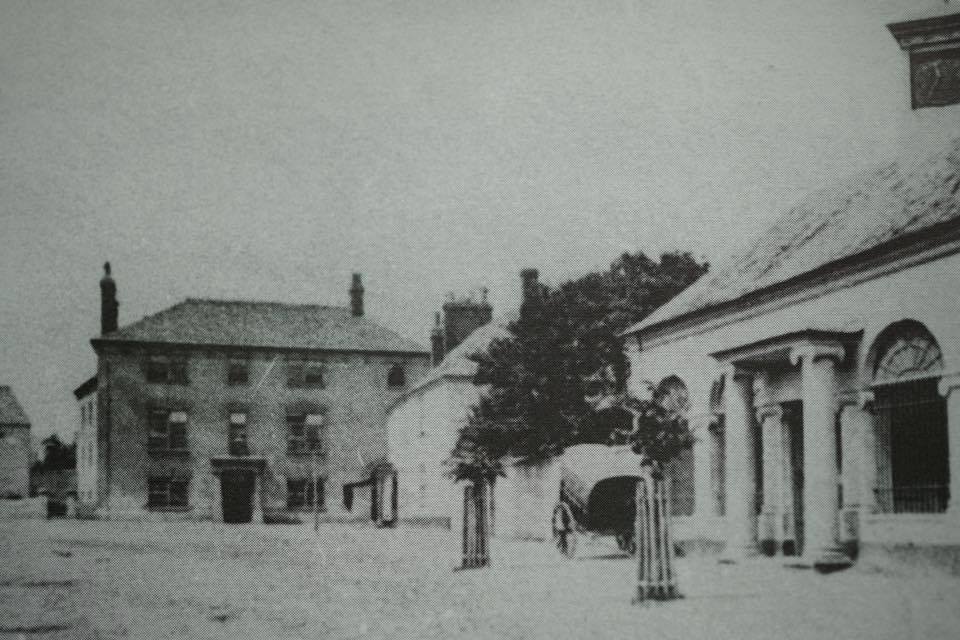
A Tucking Mill stood on the site of the Methodist Church, not far from Puddle Bridge by the Old Priory. Also located near the bridge were the stocks and pillary.
The Old Priory is one of the most ancient buildings in the town. There is no proof that the building was ever a priory but it may once have been used as a lodging house for monks. It was later used as the Manor Court and the Dunster Manor Estate Office and partly as a restaurant and tea room.
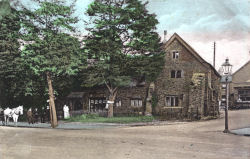
On the foreshore, the fishing rights were all in the Lords hands, either held by him or leased by him on lives. All great fish, such as sturgeon, salmon, and the like, were of duty bound sent to Dunster Castle. All seaweed too was the Lords property and the right of removing it was rented, occasionally by tenants.
The Estates of Dunster passed from the de Mohuns to the Luttrells in the 1300's and now belongs to the National Trust.
In the 15th Century there were three main towns of Minehead: Middle Town - around the Priory, Higher Town - by St. Micheals Church on the hill and Quay Town - by the sea.
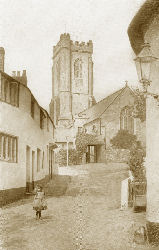
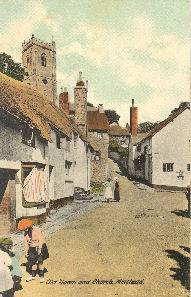
The building on the left at the foot of church steps (behind the 2 people in the right hand picture)with barred windows was not a prison, as many think. The red sandstone building was Minehead’s earliest workhouse and was used to house the poor in 1731. The building was later used as a mint and the grills on some of the windows still remain. The house on the opposite side of the steps was once a schoolhouse run by Mr.William Lewry and his wife Sarah. Maybe some of the school children are in the right hand postcard.
One of the first houses on North hill to become a hotel was the Benares Hotel (below) and in 2002 it was the first to be
demolished to build new housing. Occupancy took place at the end of 2002 and 2003. It
was originally called Ivythorne and built in 1904
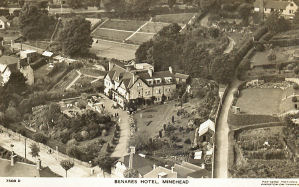
Lamb cottage was removed in 1902 and Beach house was not removed until the 1920's. The other houses on the seaward side of Quay Street were removed after the great storm of 1912.
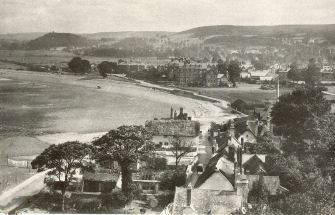
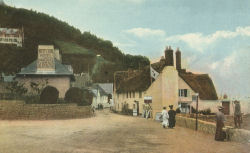
Two buildings which were taverns in the 17th century still stand. One, The Black Boy Inne, is halfway up Bampton Street on the right hand side , opposite Selborne Place which used to be called 'The Butts'. It is now cottages but still has the mounting block beside the wall at the higher end.
Lower Moor Farmhouse was the other(see picture below)once called 'The Postboy Inne'.
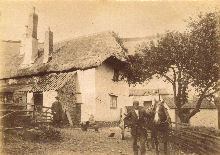
In 1685 during the Civil War, when the Duke of Monmouth lead a revolt against James II, many men from Minehead rallied to his side. After his defeat, 6 of the captured rebels were brought back to Minehead and hanged from the great beam over the arched gateway at the corner of Lower Moor road. It is a grim reminder of those times and no doubt accounts for the many ghost stories once told about the old place which once was the hangmans yard~ pictured below ~ later it was a stable block where Mrs Webber kept some of her donkeys and ponies that were used on the beach during the summer. Now it has been converted to living accomodation.
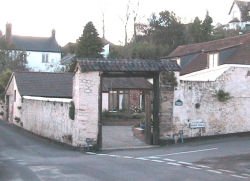
Also in the square is the Duke of Wellington Hotel built in 1820 and enlarged in 1880.
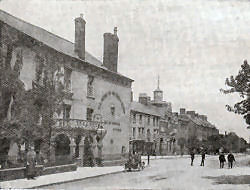
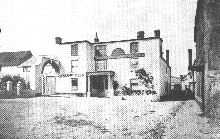
It was a disaster and a great loss to the town when The Plume of Feathers was demolished in 1965, to build a modern block of shops.
The Carlton Hotel which was built in 1870 was once called Blenheim House and nicknamed Streaky Bacon House since it was painted pink
and white. Prior to being called the Carlton Hotel it was called the Blenheim Temperance Hotel. After the demolition of the
Plume of Feathers in 1965 the council decided to preserve the name (if not the building) and the Carlton became:
'THE CARLTON PLUME OF FEATHERS'
But this too, has now been demolished in 2003 and a new large block of retirement flats have been built there.
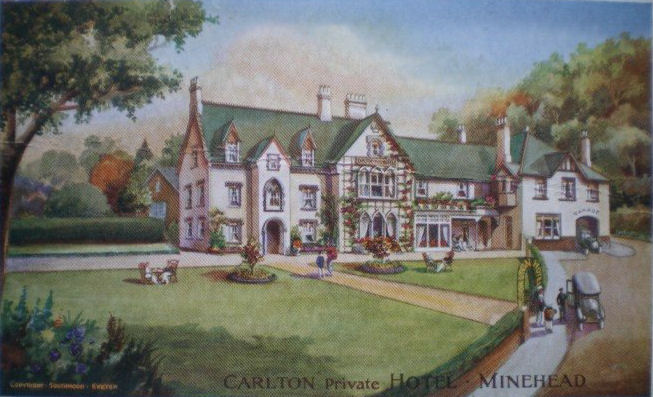
The demise of the Carlton Plume of Feathers
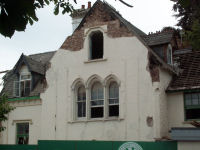
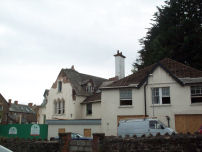
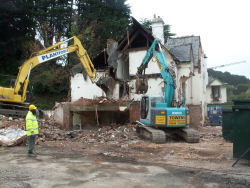
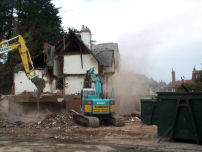
picture below show the Queens from the other side and also the audience enjoying a show.
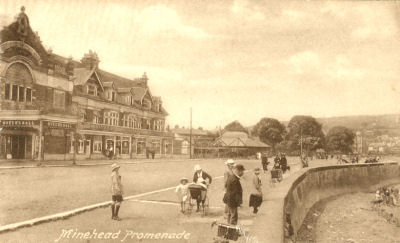
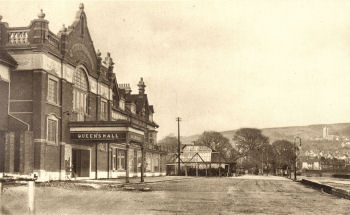
The Queens Theatre was built by Sam Marley in 1916
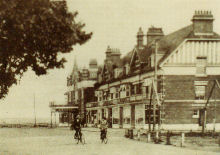
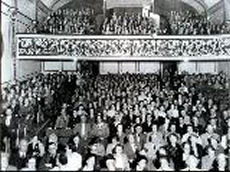
The Railway reached Minehead in 1874 and the Beach Hotel was built to co-inside. and the Avenue was called Station Road.
British Railways closed the branch line from Taunton to Minehead in 1971 as part of the Beeching cuts, and almost all the facilities at Minehead station were removed.
The WSR came to the rescue that same year. Somerset County Council bought the branch line and then leased it to the WSR.
On 21 December 1975, the WSR was able to run its first train from Bishops Lydeard to Minehead.
In the next few years, the WSR reopened the line bit by bit, starting from Minehead. By 1979, the line had been reopened all the way from Minehead back to Bishops Lydeard.
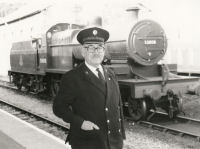
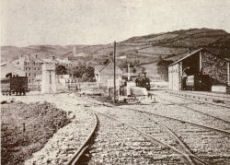
west somerset railway
Clevelands - the building up on the right as you pass the church, was built and opened in 1877 by Thomas Lomas who was living there in 1891. He also built and owned the Bristol Channel Chemical works at the Quay, built in 1872. He sold Clevelands to the Baroness de Tainteignes in 1899. She used to often come down into the town in her carriage, complete with coachman. It is now flats.
A new Town Hall was built in 1889 and is now our present hospital. Below is a picture taken during first world war with some soldiers standing outside.

The Market house was erected in 1901 to replace the smaller one, then known as the Fish Market. Notice the Plume of Feathers at the top centre of picture.
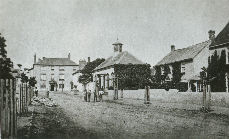
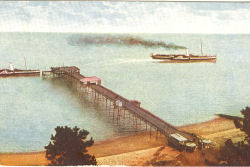
The castle like building half way up North hill by the war memorial is called Elgin Towers.
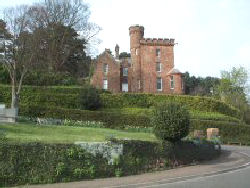
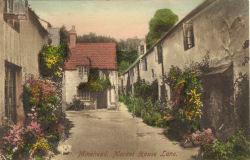
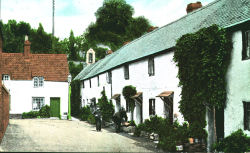
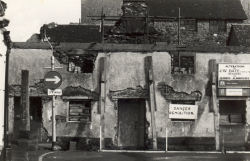
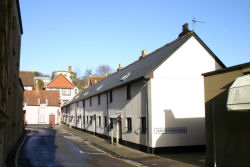
The original ships bell is mounted on the roof of the end house. The houses were built on the site of the old market place and the remains of the market cross can still be seen - it is on the left hand side of the 3rd picture, showing the renovations taking place in 1986.
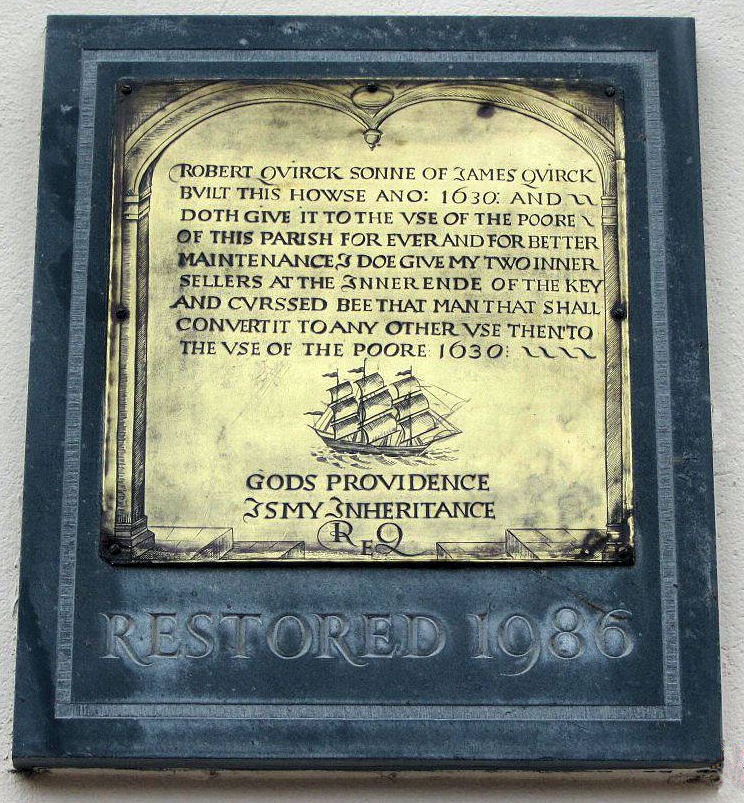
THE SWIMMING POOL
165ft x 60ft - 3ft deep and each end graduating to 15ft deep in the middle
In 1936 a magnificent open air, filtered seawater, swimming pool was built, the only one in the country to olympic standards.
It was the envy of many other towns.
It was paid for by the Luttrell family of Dunster Castle, for the people of Minehead to enjoy.
It was used to stage National championships and was a very popular place with local people and visitors alike. Many a summer evening was
spent at the floodlit Galas with games of water polo and diving exhibitions.
Report of the opening:
2000 people attended the opening of their magnificent bathing pool in June 1936.
Despite poor weather conditions and forecasts, the crowds were not deterred, and they were rewarded by a sudden weather change and a spectacular Gala. Sir Robert Horne payed tribute to “An Adventurous Spirit.” Other dignitaries and spectators were delighted with the aquatic entertainment.
Western Counties High Diving Champion 14 years old Jane Selby of the Bath Dolphins and Coate Swimming Club opened the programme by beautiful swallow diving from the top board 33 feet high, into the 15 ft.depth of shimmering crystal clear water.
On 31st May 1958 it was reported in the Somerset County Herald that Col. Luttell was not prepared to open the swimming pool that summer and it was sold to a group of Minehead business men.
click here to see an actual film of swimming championships in the Minehead swimming pool
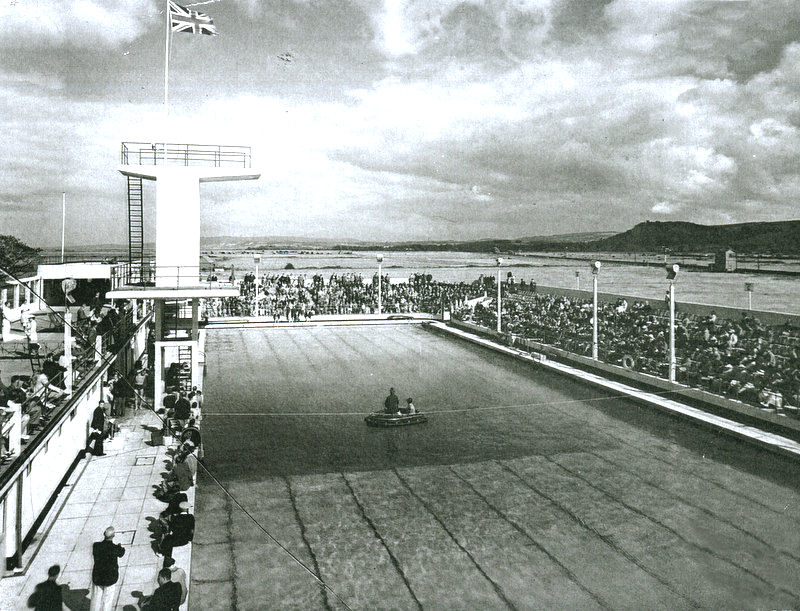
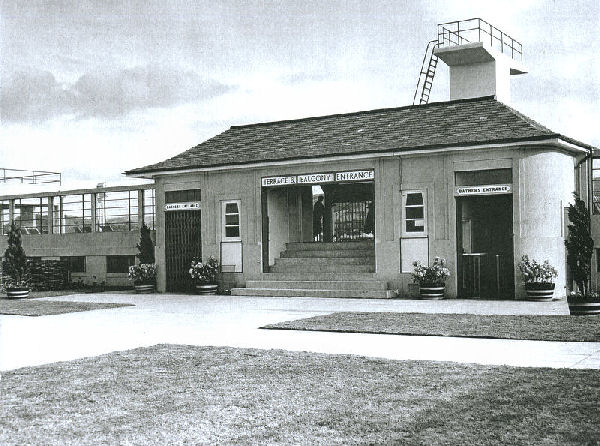
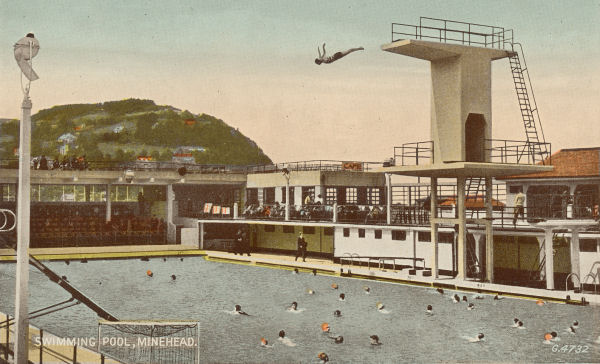
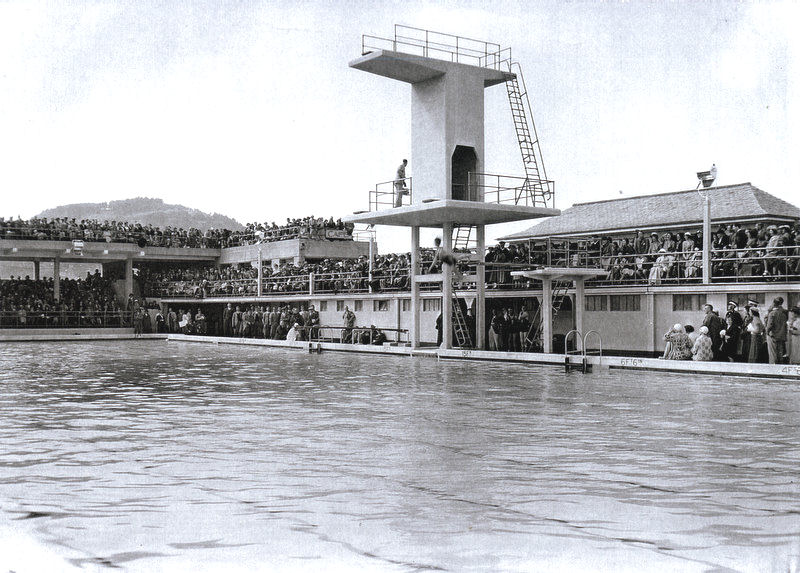
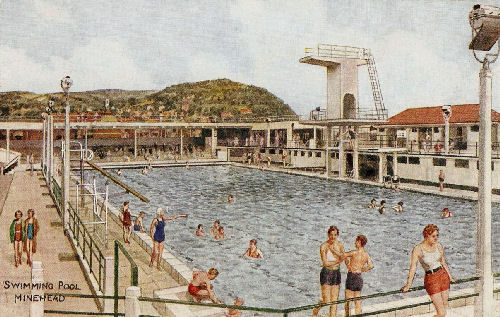
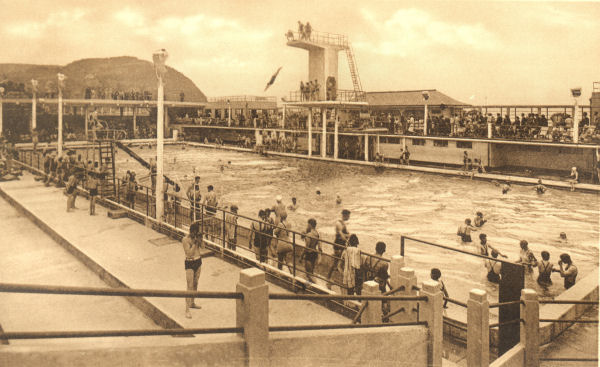
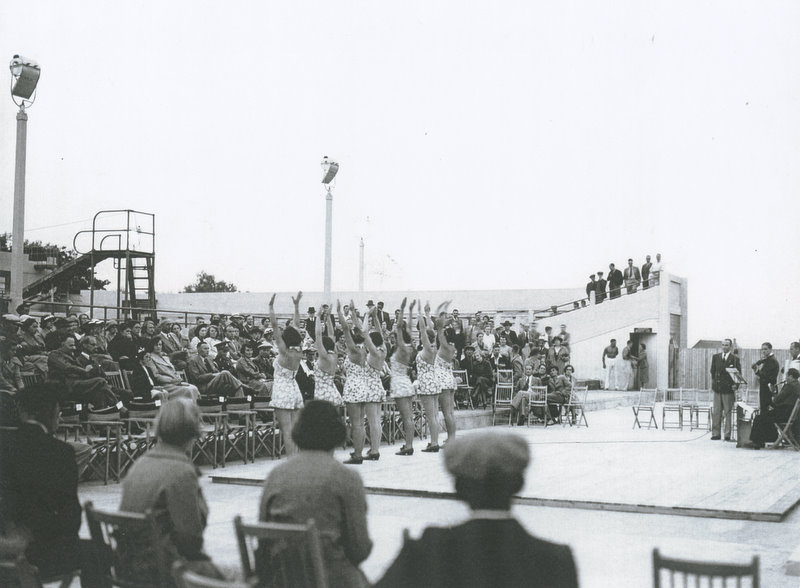
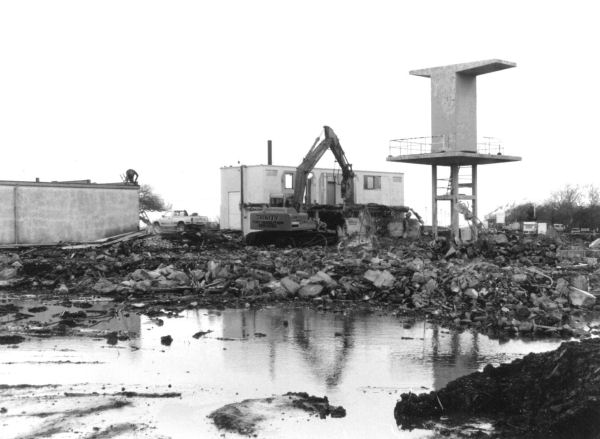
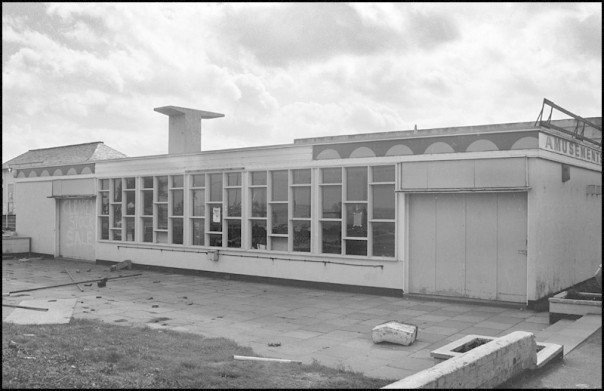
from a letter in the West Somerset free press by Charlie Harvey. 6th Aug.2010
Minehead UDC never owned the Lido. When Mr.Luttrell decided to sell it, the council was advised not to buy it due to concrete cancer and the need for a new pumping station
on the beach. However, a group of Minehead businessmen decided to buy it - these included Jack Ridler, Bernie Culverwelll and hoteliers Ivor Cornish, Lionel Bush and Harry Strawbridge
among others.
As an apprentice for J Burgess and Sons, I helped create an additional entrance on the west end of the lido as access to a new restaurant in the west stand.
We also built a new building at the front of the Lido; this was used as an amusement arcade and was run by a family from bristol who had connections with Charlie Heals Fair.
After some years when Mr Butlin wanted to extend his camp towards the town, the businessmen sold the lido to him. He ran it for a few years and then sold it to a development company.
This company then demolished the pool and built the blocks of flats houses and bungalows that we can see today. The non-purchase of the Lido site by the council was perhaps another error that they made through lack of vision.
After much compaigning by the local people, a new pool was eventually built,
but on a much smaller scale, and called the Aquasplash,
not
really deep enough for much else, I am told. Unfortunaly in 2008 the council closed it,
and it was demolished in 2009 and is now a Lidl supermarket.
So nothing is done for the children of this area who will have nowhere to learn to
swim once again!
Autumn 2010: Morrisons is nearly completed and a new roundabout
has been built.
The Aquasplash site became a bus park once it was demolished.
Obviously Morrisons having taken over the previous bus park, another was needed.
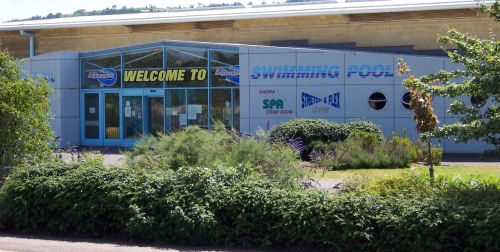 |
||
The Aquasplash swimming pool that is now a bus park
|
||
The building of Morrisons 2010 |
|
This article appeared in the County Gazette 14th Aug.2009 The people of Minehead should expect a “long journey” on the road to once again having a community swimming pool on their doorstep. Cllr Neil Parbrook, West Somerset Council’s lead member for community, issued the warning after the authority’s cabinet approved the commissioning of a feasibility study last Wednesday (August 5th 2009). Cllr Parbrook said: “We pledged to look at the feasibility of a new pool in Minehead so naturally I am delighted that cabinet has agreed to commission the study. “It will provide a detailed assessment of the physical and financial feasibility of delivering a new community pool and associated parking requirements. “The study will also have to evidence a need for a pool, and that it could be operated and sustained financially in some way in the longer term. “Should a new pool prove possible and financially viable, this is only the first step in what is likely to be a long journey.” And in 2008 hopes for a new pool were raised when council chiefs unveiled plans for a new multi-million pound replacement facility on the college’s grounds as part of the New Horizons project. But the council had to pull the plug on the plan because of financial problems. |
|---|
IT WAS RECENTLY ON THE NEWS THAT LONDONERS HAD TO WALK 20MINS TO THEIR NEAREST SWIMMING POOL
WE HAVE TO DRIVE 45 MINUTES TO OURS!
THE POSTCARD BELOW WAS POSTED NOT LONG AFTER THE LUTTRELL FAMILY OF DUNSTER PRESENTED MINEHEAD WITH THIS WONDERFUL
OLYMPIC SIZE, FILTERED SEAWATER SWIMMING POOL. THE WRITER SAYS:
"I WISH WE HAD ONE LIKE THIS IN PENARTH"....>> I WISH WE HAD ONE LIKE THIS IN MINEHEAD !!!
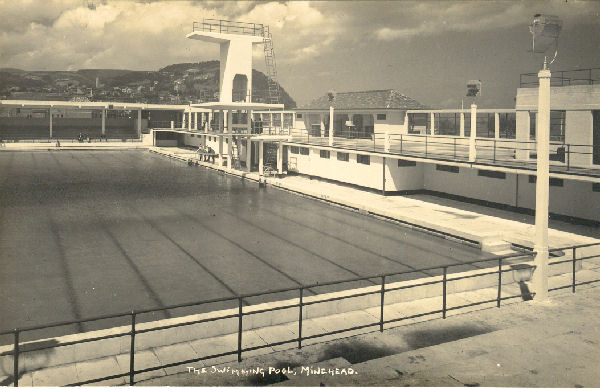 |
 |
|---|
IT WOULD BE NICE IF THE PIER WAS REBUILT AND THEN THE STEAMERS COULD DOCK AGAIN
WHATEVER THE STATE OF THE TIDE.
ALSO IT WOULD ENCOURAGE MORE VISITORS. AS THE COUNCIL HAVE SOLD OFF MOST
OF THE CARPARKS FOR PRIVATE HOUSING THEY SHOULD HAVE MORE THAN ENOUGH CASH
IN THE COFFERS TO DO SOMETHING FOR THE TOWN!
WE CERTAINLY DONT NEED NEW COUNCIL OFFICES TO BE BUILT IN A PRIME LOCATION
That makes 3 rather essential amenities for a seaside town that we do not
have anymore.
1) A swimming pool - 2) A paddling pool on the beach 3) A pier 4) only three public toilets
The population of Minehead in 1901 was 2,511 and in 2008 it was apprx 10,000 excluding Butlins
surely theres enough rates coming in to provide a replacement swimming pool ?
and why would the council want to waste money on a feasibilty study?
Of course we should have a proper top class swimming pool, theres no question about that!
click here to see an actual film of swimming championships in the Minehead swimming pool
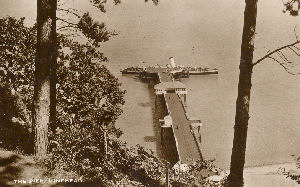
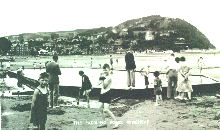
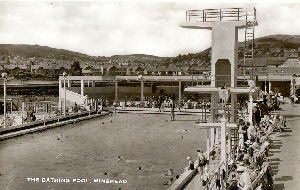
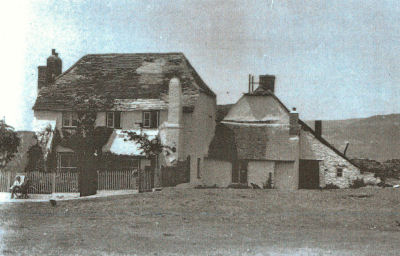
But we still have a golf course !
Warren House was the home of the Warrener, he was the gamekeeper for the Luttrell family.
The house had a lookout on its roof to watch for herring shoals.
It is now the home of the Minehead and West Somerset golf club which was laid out originally as a nine-hole course in 1882
Below are a couple of pictures of the Hotel Metropole which was built in 1892.
It stood in 4 acres of grounds in the centre of the promenade facing the sea.
It had 60 bedrooms, spacious reception, billiard, smoking rooms and private sitting rooms.
Croquet and tennis lawns, first class stabling, cariages, hunters and accomodation for motors.
It was often used by the Indian Rajahs when they came to play polo at Dunster.
The ponies were seen daily exercising on the beach. It was converted into flats in 1953
but kept a public bar which is called the Hobby Horse.
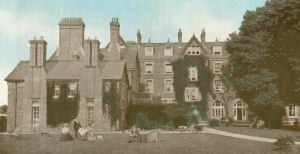
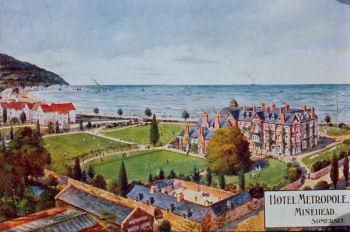
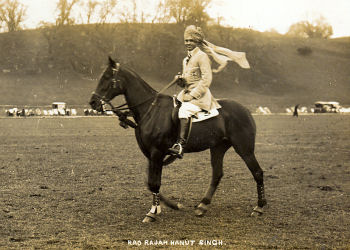
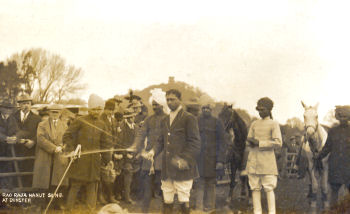
RAJAH HANUT SINGH AT DUNSTER POLO GROUND
click here for actual video
